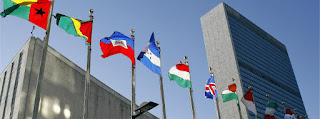Every May, peace-loving people gather in Seoul, Republic of Korea, and major cities around the world and hold the Peace Walk and various peace culture events to advocate for the Declaration of Peace and Cessation of War (DPCW). This year, HWPL's 8th Annual Commemoration of the Declaration of World Peace will be held online due to the ongoing COVID-19 situation.
25 May 2013 is the day when the Declaration of World Peace was proclaimed, Heavenly Culture, World Peace, Restoration of Light (HWPL) was founded, and the International Peace Youth Group (IPYG) was established.
The following concept note addresses the significance of the 8th Annual Commemoration that will be held on 25 May and topics that will be discussed that day.
○ CONCEPT NOTE
HWPL’s 8th Annual Commemoration of the Declaration of World Peace
- Citizen-Led Peacebuilding Initiative for Global Coexistence and Harmony -
1. Summary
HWPL’s 8th Annual Commemoration of the Declaration of World Peace will be hosted via online on 25 May 2021, in commemoration of the spirit of the Declaration of World Peace proclaimed in front of the World Peace Gate in Seoul, South Korea, on 25 May 2013.
Through the Declaration of World Peace proclaimed eight years ago, HWPL proposed an effective and practical measure to achieve world peace and cessation of war in which the entire world can implement. Along with this proclamation, over 30,000 youths from around the world participated in a peace walk that spread to various continents and countries to be a symbol of a grassroots global peace movement.
Based on these achievements, this year’s commemoration includes discussions on designing a citizen-led peace movement and strengthening cooperation to promote humanity’s coexistence and harmony as we overcome global uncertainties that stem from hatred, conflicts, misunderstanding, and lack of communication in this current pandemic era.
This event is hosted by HWPL, with the International Peace Youth Group (IPYG) and the International Women’s Peace Group (IWPG) that are building a global peace network alongside HWPL.

2. Background
Heavenly Culture, World Peace, Restoration of Light was founded on 25 May 2013, which was also when Chairman Man Hee Lee of HWPL proclaimed the Declaration of World Peace he drafted. Chairman Lee proposed a basic framework for international cooperation for peace through this declaration, which includes the participation of global leaders for international law for peace, creation of a global peace network of youth and women, and the role of media. Around 30,000 citizens participated in a peace walk that took place on the same day of the declaration, which became a symbol of the public’s voice for peace.
The fundamental principles of the Declaration of World Peace evolved into the Declaration of Peace and Cessation of War (DPCW), which proposed a progression for peace in which every individual, country, international organization, and non-governmental organization can participate.
The DPCW deals with the current global issues of conflict that have been intensifying through war and its clauses include prevention and solution for conflicts, gradual reduction of war potential and repurposing weapons for public welfare, practical approach to religious and ethnic issues, and spreading the culture of peace.
International organizations as well as governmental and non-governmental organizations from over 193 countries declared their support for the DPCW, and the result of their participation for this peace movement was also made possible by the participation of the citizens around the world.
3. Purpose and Result
HWPL declared that it would “March On Toward Sustainable Peace in a Pandemic Era” to respond to the pandemic. Many risks to peace have appeared globally in different forms during this crisis. In light of this, the event will diagnose various global issues such as hatred against certain groups, education gaps, climate change, the economy and welfare, human rights infringement, violence in cyberspace, and religious and ethnic conflicts to search for a solution.
The realization and outcome of the peace development plans that will be proposed in targeted countries and regions at the event depend on the participation and commitment of the members of the society (stakeholders).
HWPL plans to announce how to build educational infrastructure to expand the implementation of its peace education.
And the IPYG and IWPG will present a citizen-led peace development initiative and action plan presented through an international network. In addition, we would like to call for international solidarity and support to achieve these plans.
☕
#HWPL #IPYG #IWPG #PEACE #PEACE_LOVING #PEACE_KEEPER
… … …
WWW.HWPL.KR
















